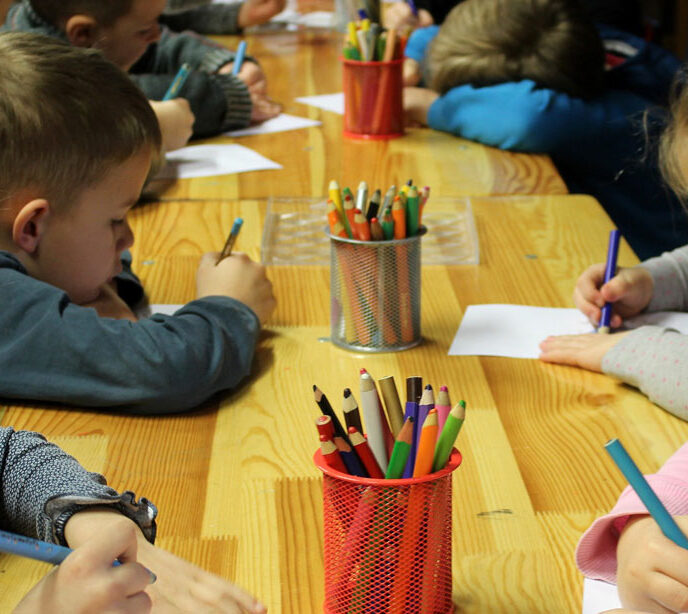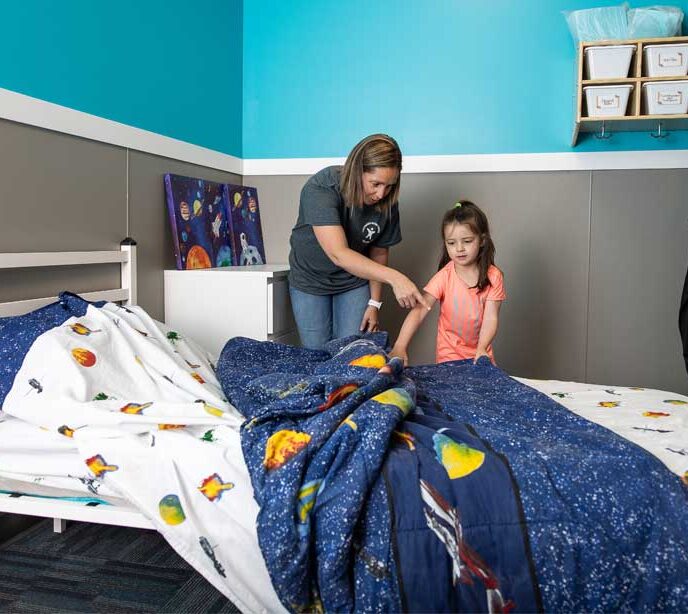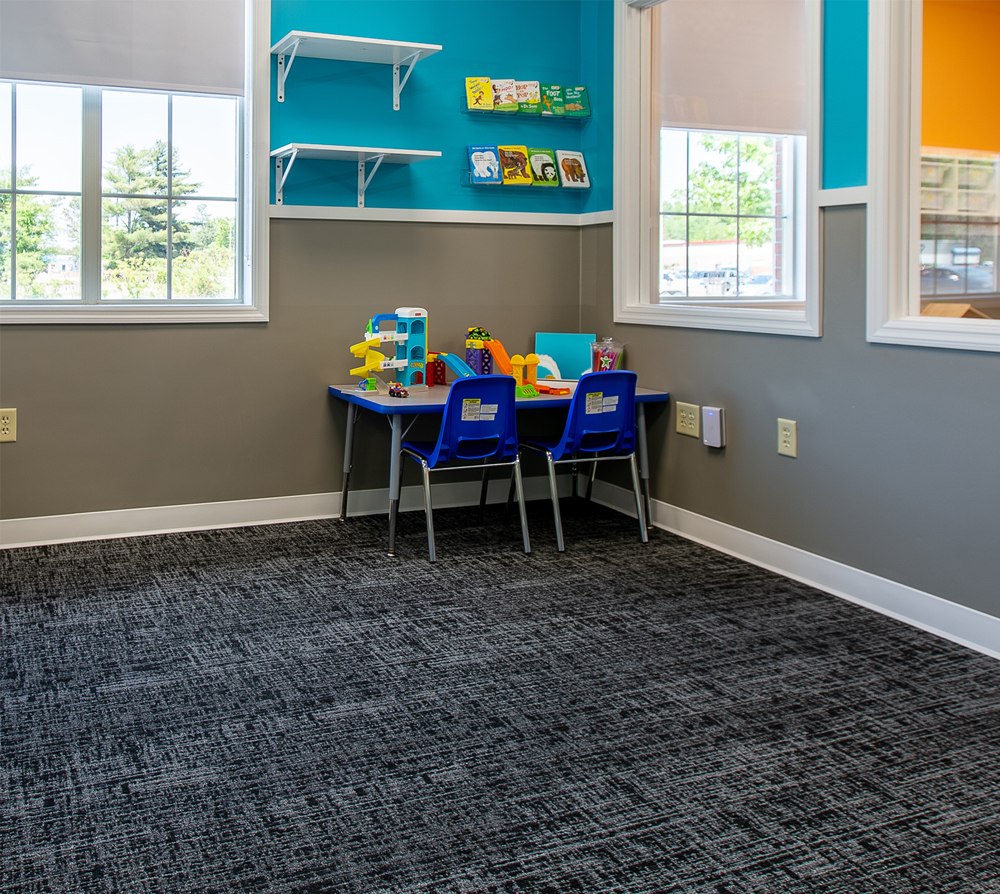Transitioning From ABA to School
It’s difficult to know when, or even if, you should move your autistic child from ABA therapy to a mainstream school. We take a look at all the different elements you need to factor into your decision so that you can make the right choice for your child and family.

Transitioning From ABA to School: What Parents Should Know
It’s difficult to know when, or even if, you should move your autistic child from ABA therapy to a mainstream school. It’s natural to wonder if your child is truly ready, what challenges they might face, and how to make the change as smooth as possible.
By understanding what school readiness looks like and how ABA therapy centers like Lighthouse Autism Center (LAC) can help prepare children for this transition, you can approach the decision with more clarity and confidence. This blog explores the topic of school readiness and what parents should know about transitioning from autism therapy to a mainstream school setting.
Knowing When The Move From ABA Therapy to a Mainstream School is The Right Call
For many parents, one of the biggest questions after beginning ABA therapy for autism is knowing when, or if, their child will be ready to move into mainstream school. It’s not always easy to know if now is the right time, or how to best support your child through the change. Choosing when to move from therapy into a school setting is a big step, so it can feel overwhelming for both the child and their parents, especially because every autistic child’s school readiness journey looks different.
Applied Behavior Analysis (ABA) therapy for autism is an important tool in helping your child learn the specific skills they will need to prepare for a transition into a traditional schooling enviorment, ensuring they tick all the boxes on a school readiness checklist. However, there is still a lot for parents to understand if they’ve been thinking about when to transition their autistic child into a mainstream school.
Even with therapy support, parents often wonder if their child will thrive in a traditional classroom? Will they fit in? Will they make friends? Will they be able to keep up with curriculum? How will they react to the new, very different enviorment? This is a deeply personal decision, filled wil questions, and there is no single “right” answer. Instead, it’s about understanding your child’s unique strengths and challenges, the supports available at school, what they need to achieve to be considered “ready,” and what feels best for your family.
Autism and Public Schools: Can My Child Adapt?
As a parent, the first question you’ll probably ask long before you make any decisions is “Will my child manage in a regular school enviroment?” The good news is that an overwhelming majority of autistic children are placed in a typical school enviorment. The article “Educating Autistic Children”, written by Aubyn Stahmer and Laura Schreibman from the American Federation of Teachers, shares how 89% of autistic children attend regular public schools (even if the time they spend in a regular classroom may vary depending on their individual needs).
There’s no doubt that it may not be as easy for many children with autism to adapt to a mainstream school, but they can make the switch from an ABA therapy program with the right skills and support. With the right support and preparation, children often surprise families with how well they adjust.
Still, the transition can feel daunting. Schools vary in the resources they offer, and children may need time to adjust to new expectations and learn how to navigate their school schedule.
Should My Child With Autism Transition to a School Environment?
Some families begin by exploring a school for kids with autism, while others move directly into a mainstream classroom. The right path depends on your child’s needs, strengths, and readiness. It is crucial to remember that just because a child can attend a mainstream classroom, it does not always mean it is the right time.
Choosing between a mainstream classroom and a school for autistic kids is not always easy. Understanding the pros and cons of each schooling environment can help guide your decision. Let’s unpack the advantages and disadvantages that your autistic child may experience in a mainstream schooling environment.
The Pros of Attending a Mainstream School
There are many advantages to moving an autistic child into a regular school. These include:
- An autistic child may feel better knowing they are included in a regular school with other children, even if they know they are different from their peers.
- A mainstream school environment will help them develop the social skills to navigate life both during and after school, directly from their peers.
- It will help your child develop relationships outside of their immediate family and the therapists they work with in other programs
- Public schooling is not only free, but many public schools offer support to help a child with an autism diagnosis make progress in a traditional classroom, such as Individualized Educational Plans (IEPs).
- Your child will play an important role in helping neurotypical children better understand neurodivergent children through their daily interactions.
The Cons of Attending a Mainstream School
Just as there are advantages, there are also disadvantages that may affect an autistic child in a mainstream school. These include:
- Your child may feel left out in a mainstream school if their social skills are lacking.
- Allistic children may not understand the differences between them and your child, which could lead to isolation or difficulty connecting to peers.
- As much as a mainstream school may offer some degree of support to your child, there may be a lack of teaching resources and academic support to empower their success at school. Though teachers may have the best of intentions, they might not have the resources to support your child the way they want to.
- Your child’s confidence may suffer if they aren’t able to keep up academically with their peers, leading to a range of difficulties like diminished confidence, isolation, outbursts, or school refusal.
- Depending on their symptoms of autism, your child may struggle with handling the day-to-day tasks of a regular day at school, such as making sure they’re in the right class on time or navigating a large school building.
- Negative experiences may lead to additional negative outcomes as your child grows older.
Ultimately, it Depends on Your Child as an Individual
It’s undoubtedly difficult to weigh up these pros and cons, but ultimately, the decision to move a child from ABA therapy into a mainstream schooling environment very much depends on your child and whether they meet the requirements for school readiness. While some autistic children have great difficulty adjusting to regular school life, it may be much easier for others to adapt to traditional schooling offerings.
Signs That Your Child with Autism is Ready to Start Mainstream School
The relationship between autism and school looks different for every child. While some thrive in larger classrooms, others may need more structured support to succeed. The key is knowing what your child needs and working with your ABA provider to help them get there.
When it comes to schools and autism, there is no one-size-fits-all approach. Supportive teachers, strong IEPs, and collaboration with your ABA provider can make a big difference. While you are likely already working with your ABA provider, who can help you gauge when your child is ready to make the move into a mainstream school, it’s also important to better educate yourself on this important time in your child’s life.
The article “When Is a Child Ready for Mainstreaming?” written by Yael Goldmintz-Rosenbaum, Ph.D., and Susan J. Schwartz, MAEd, covers this topic for the Child Mind Institute, an independent nonprofit that works with children struggling with mental health and learning disorders.
In this piece, they identify four important factors to keep in mind when deciding to move your child into mainstream schooling, which we go through in detail below.
School Readiness Checklist
These are the four elements that you should consider part of your school readiness checklist for your autistic child:
1. What Grade is Your Child Going Into?
There are specific years when children are introduced to new academic challenges, and these could be very difficult or even too much for an autistic child to handle. It’s important to make sure that your autistic child has the necessary skills to meet these demands before you move them into a specific grade at a regular school.
2. Can Your Child Meet Expectations in the New Class?
An autistic child who may not have the cognitive skills to match their peers may become demoralized, resulting in them falling even further behind. It’s recommended that your child undergo testing to see what their cognitive and academic strengths and weaknesses are, to make sure they are put into a grade in a regular school environment where they are able to perform adequately.
3. How Resilient is Your Child?
If your child can manage challenges with support and encouragement, they may adjust more easily. Children who need more emotional support may do better with a slower transition plan.
4. Is Your Child Comfortable Being an Advocate for Themselves?
Children who can raise their hand to ask questions or tell a teacher they need help are more likely to thrive in a traditional classroom. Children who aren’t quite so confident may not be able to express themselves properly and struggle with the learning process as a result.
How to Support Your Autistic Child During this Process
The transition to school is not one you need to face alone. One of the most important things to remember once you’ve decided to place your child in a mainstream school is that your ABA provider will be there to assist you. They will play a role in ensuring that your child understands all the things they will need to do to get ready for school, and some providers specifically teach goals to achieve school readiness skills in mock classroom set-ups. Your ABA provider should also engage with the school you’ve chosen to ensure it is properly equipped to meet your child’s needs and support the IEP as needed
By working with your autistic child, ABA provider, and your chosen school, you’ll be able to help your child make the move from ABA therapy to mainstream schooling.
Ensure Your Child is Ready for a Mainstream School With Lighthouse Autism Center
At Lighthouse Autism Center, we offer the Lighthouse Fusion ABA therapy program, a unique program that combines the best elements of ABA and speech therapy to ensure that your autistic child can achieve the best outcomes.
We also provide a variety of autism resources to help you better understand autism and any issues related to it. Whether your family is considering a school for autistic children or weighing options within autism and public schools, Lighthouse Autism Center is here to help. Our unique therapy model prepares children for long-term success both in therapy and in school.
Together, we can unlock your child’s potential
Related News

10/28/2025
Transitioning From ABA to School
It’s difficult to know when, or even if, you should move your autistic child from ABA therapy to a mainstream school. We take a look at all the different elements you need to factor into your decision so that you can make the right choice for your child and family. Transitioning From ABA to School: […]

10/22/2025
Simple Autism Routine
The simpler, the better when it comes to developing a routine for your autistic child. Predictable routines provide a sense of comfort and stability that can be extremely beneficial for autistic children. Discover the benefits of simple routines, how to create them, and ways to handle changes. Building Simple Daily Routines That Help Autistic Children […]

10/22/2025
Traveling with an Autistic Child
Preparing for a Trip with Autistic Children When you’re making any travel plans, preparation is key. The small bit of extra planning can make a huge difference in ensuring everything runs more smoothly. But, when you’re traveling with an autistic child, there are additional factors that can make travel more challenging, from finding autism-friendly vacation […]


